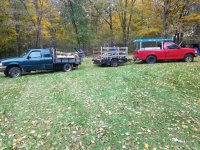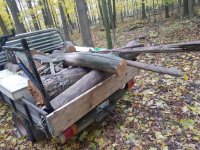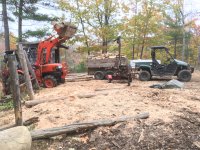Mr. Gould - educate me on a Swinging Dutchman please! I値l google it in the meantime!
If I understand it properly, It's a technique used to start a tree falling in one direction, then get it to redirect to another direction during the fall (usually in some direction other than the original lean). It can be useful if you need to get your tree around the crown of a nearby tree, but don't want it to land in that starting direction (and smash some other tree which is standing there).
I've never learned to do it myself. I'd like to learn, mostly because I'm curious. I've been told it's not something you want to learn just by experimenting on your own (there is a reason OSHA considers the
Swinging Dutchman an unacceptable practice). It's best to have someone who really knows what they are doing show you. I'm not saying don't do it, or trying to tell someone who really knows what they are doing to give up the practice. It has its place and can be handy at times. I usually just figure out some other way to solve the problem.
If you look in the diagram of the link above, that single saw kerf is one of the keys: The tree starts to fall in one direction. When that kerf closes, it tends to bump the tree over in another direction. The hinge is generally tapered: narrower on the side where that extra saw kerf was cut. This encourages that side of the hinge to break, allowing the tree to move in the new direction. (Gordon, did I get that description right?)
A related cut is the "Soft Dutchman". I've only seen it done once. It required the faller to spend way too much time at the stump after the tree started moving for my taste. I prefer to get out of there once the tree is in motion. I don't think the same is the case for the Swinging Dutchman: I think you can set it up and get out when the tree start to move, but I'll defer to Gordon on this (and maybe someday I'll get up his way and get him to show me how it's done in person. I tend not to trust YouTube videos on this stuff: if you don't already know the technique, how do you know you are choosing a good video from which to learn?)





